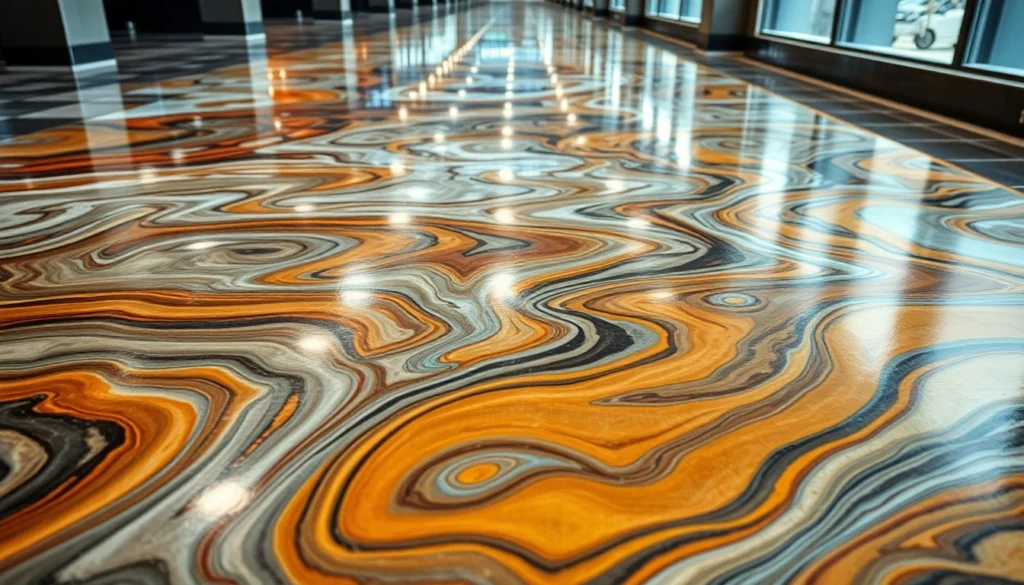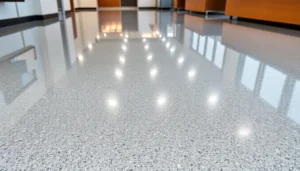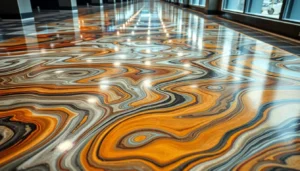Enhance Your Space with Expert Epoxy Resin Floor Solutions for Durability and Style

Understanding Epoxy Resin Floors: Materials and Benefits
Epoxy resin floors have gained significant popularity in both residential and commercial spaces due to their exceptional durability, aesthetic appeal, and ease of maintenance. Whether you’re considering upgrading your garage, basement, warehouse, or retail environment, understanding the fundamentals of epoxy resin flooring is essential to making an informed decision. An epoxy resin floor is not just a coating; it’s an investment in long-term functionality and style that can transform any space into a sleek, resilient surface.
What is an epoxy resin floor?
At its core, an epoxy resin floor is a seamless surface created by applying a two-part epoxy mixture directly onto concrete, asphalt, or other suitable substrates. The epoxy components chemically react and cure to form a hard, glossy, and highly adhesive layer. This process results in a robust, chemically resistant surface that can withstand heavy traffic, impact, and chemical exposure. Epoxy flooring can be customized with various colors, patterns, and textures, making it suitable for both practical and decorative purposes.
Key advantages of epoxy flooring in commercial and residential settings
- Durability: Epoxy floors are highly resistant to wear, impacts, and chemical spills, making them ideal for high-traffic areas.
- Ease of Maintenance: With a smooth, non-porous finish, cleaning is straightforward—generally requiring only sweeping and occasional damp mopping.
- Cost-Effectiveness: Although initial installation costs can vary, epoxy floors usually offset expenses over time through longevity and reduced maintenance needs.
- Aesthetic Versatility: From sleek monochrome surfaces to intricate patterns and metallic effects, epoxy flooring offers a wide range of design options.
- Resistance to Chemicals and Moisture: This makes epoxy floors suitable for laboratories, factories, and garages where chemical spills or moisture are common.
- Safety Features: Options for anti-slip textures improve safety in environments prone to spills or wet conditions.
Types of epoxy resin floors and which suits your needs
Choosing the right epoxy system depends on your specific application, load requirements, and aesthetic preferences. The main types include:
- Solvent-Based Epoxy: Provides strong adhesion but has higher VOC content, suitable for industrial use where air quality isn’t a primary concern.
- Water-Based Epoxy: Low VOC, easy to apply, and environmentally friendly, ideal for residential projects.
- 100% Solid Epoxy: Offers maximum thickness and performance, often used in heavy-duty environments like warehouses.
- Self-Leveling Epoxy: Creates smooth, flat surfaces, perfect for garages and showrooms.
- Quartz and Flake Epoxy: Incorporates aggregates to add texture and slip resistance, popular in commercial settings.
Understanding these variations helps in selecting an epoxy flooring solution tailored to your space’s functional and aesthetic needs.
Design Ideas and Customization for Epoxy Resin Floors
Color schemes, patterns, and effects to elevate aesthetic appeal
Epoxy floors are renowned for their versatility in design. You can choose monochrome shades for a minimalist, modern look or vibrant colors to create dynamic environments. Popular effects include metallic epoxy finishes that mimic natural stone or liquid metal, adding depth and sophistication. Custom patterns such as geometric designs, branding logos, or abstract art can be embedded into the epoxy to match your brand identity or personal style.
Incorporating textures and finishes for functional and decorative purposes
Beyond color, textures play a crucial role in both form and function. Matte, satin, or gloss finishes can be selected based on lighting and desired reflectivity. Adding textured aggregates, such as chips or sandblasted surfaces, enhances slip resistance, vital for wet or industrial environments. Combining decorative finishes with protective layers increases longevity and safety, ensuring your epoxy floor remains striking and practical over time.
Examples of trendy epoxy resin floor designs for modern spaces
Current trends showcase textured metallic floors in modern offices, colorful terrazzo-inspired designs in retail outlets, and minimalist monochrome coatings in garages and basements. The use of UV-stable epoxy allows for vibrant, fade-resistant colors suitable for outdoor applications. Tech-inspired geometric patterns and custom branding elements also add a personalized touch that elevates your space’s aesthetic and functional appeal.
Installation Process and Best Practices for Epoxy Resin Floors
Preparation steps for a flawless application
A successful epoxy floor begins with meticulous preparation. This involves cleaning the substrate thoroughly to remove dust, oil, and existing coatings, followed by repairing cracks or surface defects. Proper surface profiling—via grinding or shot blasting—ensures optimal adhesion. Moisture levels in concrete must be tested, as excessive moisture can hinder curing. Once prepared, a primer is applied to promote bonding before the epoxy system is mixed and applied systematically, typically in multiple coats for thickness and durability.
Application tips and common pitfalls to avoid
- Follow manufacturer instructions precisely, especially regarding mixing ratios and curing times.
- Maintain optimal temperature and humidity levels during application to prevent bubbles, improper curing, or surface imperfections.
- Use appropriate tools, such as notched squeegees and rollers, to achieve even coverage.
- Avoid applying epoxy over unprepared or contaminated surfaces, which can lead to adhesion failure.
- Plan installations to minimize foot traffic during curing to prevent marks or damage.
DIY vs professional installation: what to consider
While DIY epoxy flooring kits have made installation more accessible, complex projects—especially large-scale or intricate designs—benefit from professional expertise. Professionals bring experience in surface preparation, optimal application techniques, and finishing processes, ensuring a seamless, durable finish. For homeowners or small spaces, a carefully guided DIY approach can be cost-effective, but understanding your limits and the importance of proper preparation is crucial to avoid costly mistakes.
Maintenance, Durability, and Performance Metrics
Cleaning and upkeep for long-lasting epoxy floors
Maintaining epoxy floors involves simple routines such as regular sweeping and damp mopping with mild detergents. Avoid harsh chemicals and abrasive tools that can scratch or degrade the surface. Applying a wax or sealant periodically can restore shine and add an extra layer of protection. For industrial or high-traffic areas, routine inspections to identify and repair minor damages preserve the integrity of the flooring.
Assessing durability and resistance to wear and chemicals
Epoxy’s durability is often evaluated through tests for adhesion, impact resistance, chemical exposure, and abrasion. Commercial-grade systems can withstand heavy machinery, oil spills, and corrosive substances, making them suitable for industrial applications. In residential spaces, the focus often includes resistance to stains, UV fading, and mechanical wear.
Performance indicators: how to measure success and longevity
Indicators include the absence of chips, cracks, or discoloration over time, maintained gloss or finish, and resistance to staining or chemical damage. Regular inspections and adherence to maintenance routines extend epoxy lifespan, often exceeding 10-20 years in optimal conditions. Advanced flooring options—with UV stabilization and impact modifiers—further enhance longevity and performance metrics.
Innovations and Future Trends in Epoxy Resin Flooring
Eco-friendly and sustainable epoxy solutions
Growing environmental awareness has driven innovations toward low-VOC, solvent-free, and plant-based epoxy formulations. These greener options reduce harmful emissions while maintaining high-performance standards. Some epoxy manufacturers now incorporate recycled materials or bio-based resins to create sustainable flooring solutions without compromising durability.
Advances in UV stability and impact resistance
Recent developments include UV-stable epoxies that resist yellowing and fading outdoors, expanding design possibilities. Enhanced impact resistance ensures better durability in industrial environments, reducing the need for repairs and replacements. These technological advances make epoxy floors more suitable for a variety of demanding applications, from commercial to outdoor settings.
Emerging design techniques and customization options
Innovative methods such as 3D epoxy art, embedded logos, and augmented reality-inspired designs are revolutionizing the aesthetic potential of epoxy floors. Incorporating smart technology, like embedded LED lighting, can further customize spaces, creating dynamic environments that blend form and function seamlessly.






